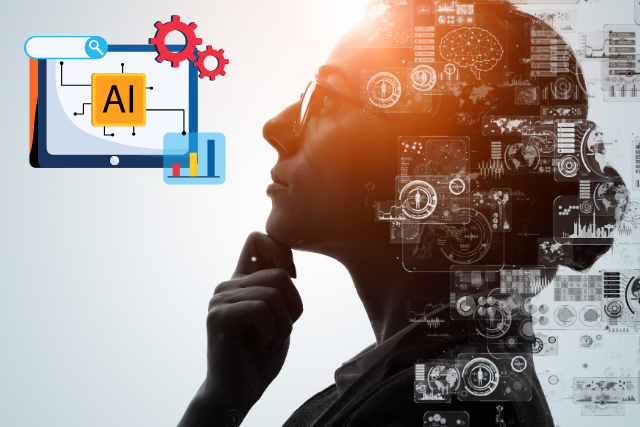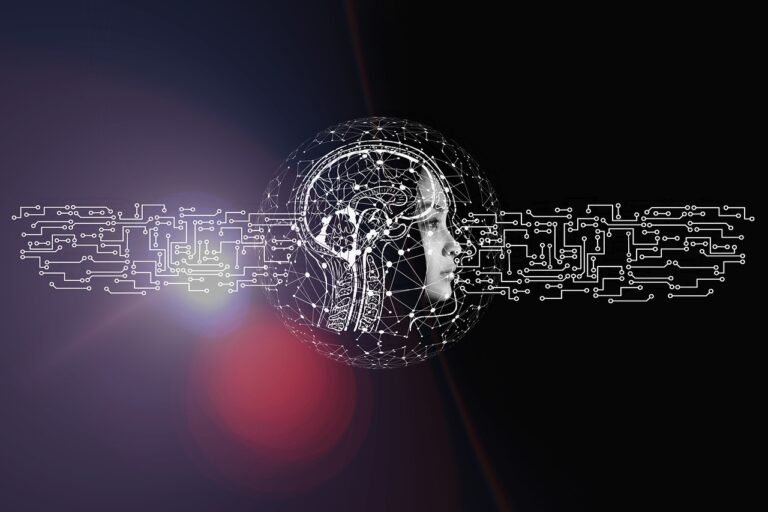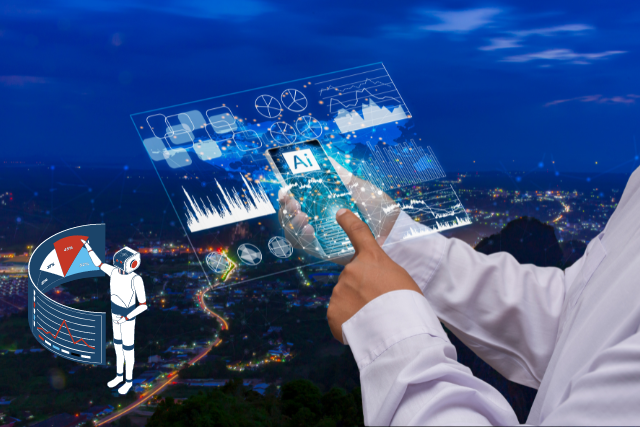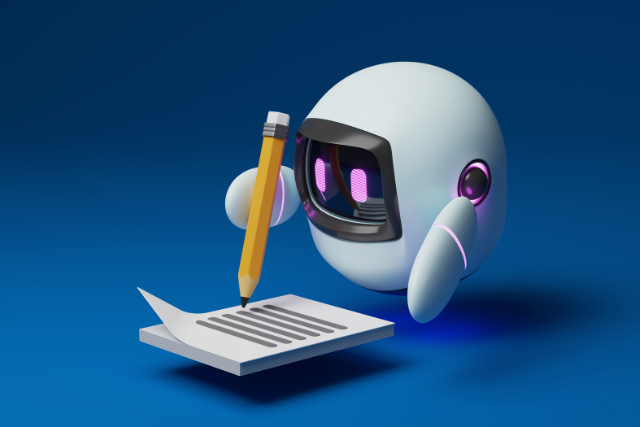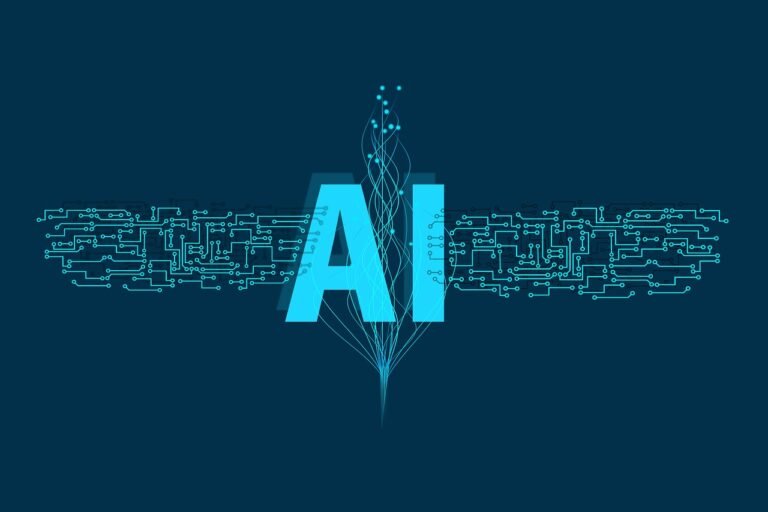Okay, teachers! Let’s get real for a moment. We all know the struggle is real when it comes to juggling lesson plans, grading papers, and trying to make every student excited about learning. But guess what? AI might just be your new best friend in the classroom!
We’re talking personalized lessons, automated tasks, and even fun ways to learn that actually keep students engaged.
In this blog post, we will explore how AI is transforming education, its impact on teachers and students alike, and the future it promises for learning.
Table of Contents
AI’s Transformative Power
The traditional education system faces many challenges, including:
- Inequalities: Geographic location, socioeconomic background, and access to resources create disparities in educational opportunities.
- Teacher shortages: The demand for qualified educators often surpasses supply, leading to overloaded classrooms and a lack of personalized attention.
- Limited resources: Schools struggle with budget constraints, limiting the availability of specialized equipment, materials, and expert guidance.
- Engagement barriers: Traditional teaching methods can be monotonous, failing to cater to different learning styles or ignite students’ interest in the subject matter.
AI steps in to address these challenges by:
- Personalizing learning experiences: AI algorithms analyze student data, like academic performance, learning preferences, and engagement patterns, to create tailored lesson plans and adapt to individual needs.
- Automating administrative tasks: AI tools automate repetitive tasks such as grading assignments, scheduling classes, and managing attendance records, freeing up valuable time for teachers.
- Providing real-time feedback: AI-powered platforms offer instant feedback on student work, allowing teachers to identify areas needing improvement and provide timely guidance.
- Enhancing accessibility: AI tools break down language barriers, make learning materials available in diverse formats (audio, visual, interactive), and create inclusive environments for students with disabilities.
| Application Area | Examples | Benefits | Challenges |
|---|---|---|---|
| Personalized Learning: | Adaptive Learning Platforms (Khan Academy, Duolingo). AI-Powered Tutoring Systems (iTutor, BrainPop) | Customized learning paths, individualized support, improved student engagement | Data privacy concerns, potential for algorithmic bias, overdependence on technology |
| Streamlining Operations: | Automated Grading & Feedback Tools. Resource Management Platforms | Increased efficiency for teachers, reduced workload, better resource allocation | Potential for teacher resistance to automation, difficulty integrating with existing systems |
| Engaging Learning Experiences: | Gamified platforms (Kahoot!, Quizlet Live). Interactive simulations and virtual reality experiences | More interactive learning, increased student motivation, enhanced engagement | Cost of implementation, access issues for students without internet or technology |
| Addressing Specific Needs: | Speech Recognition & Accessibility Tools. Language Learning Assistance Software | Improved accessibility for students with disabilities, global connections and cultural immersion | Technical limitations, language barriers, potential for misuse |
AI’s Role in the Classroom
The potential of AI in education extends far beyond personalized learning experiences. It manifests across various facets of the classroom:
Personalized Learning
Adaptive Learning Platforms: These platforms use AI to analyze student performance and adjust content difficulty, providing an individualized educational journey tailored to each student’s strengths and weaknesses.
AI-Powered Tutoring Systems: Interactive virtual tutors powered by AI can provide one-on-one support to students struggling with specific concepts or tasks. These systems offer instant clarification, personalized practice, and motivational guidance.
Streamlining Operations
Automated Grading and Feedback: AI algorithms can grade assignments and quizzes automatically, freeing up teachers’ time for more meaningful interactions with their students. Some platforms also provide suggestions on how to improve student work and offer feedback tailored to specific areas of improvement.
Resource Management: AI-powered tools assist in organizing classroom resources like books, equipment, and supplies, optimizing storage space and ensuring efficient use.
Enhancing Engagement and Motivation
Gamification and Interactive Learning: AI integrates gamified elements into learning experiences, making educational content more engaging and interactive. This can help foster student interest through challenges, rewards, and personalized goals.
Intelligent Search Tools: AI search engines within online platforms can help students easily access information relevant to their needs while minimizing distractions.
Addressing Specific Needs
Speech Recognition and Accessibility: AI-powered tools allow for the use of voice recognition software, making learning accessible to students with visual impairments or other disabilities.
Language Learning Assistance: AI can translate languages in real time during conversations, offering instant support for language learners. This allows students to participate in globalized discussions and connect with peers from diverse backgrounds.
AI for Teachers
While AI is revolutionizing teaching tools, it also empowers teachers by enhancing their role in the learning process:
- Data-Driven Insights: Teachers can leverage AI’s ability to analyze student data to identify patterns and trends, understand individual needs, and personalize instruction for each student. This allows educators to focus on higher-level tasks such as mentoring and fostering critical thinking.
- Increased Efficiency: AI automation relieves the burden of mundane tasks, allowing teachers to dedicate more time to meaningful activities like creating engaging lessons, providing personalized feedback, and building strong student relationships.
- Personalized Professional Development: AI tools can personalize professional development resources, tailoring learning paths based on individual teacher needs and interests. This allows teachers to continuously improve their skills and enhance their teaching practices.
The Future of Learning with AI
The integration of AI into education represents a significant paradigm shift in how we approach learning. It’s not about replacing teachers but rather about empowering them to become more effective facilitators, providing personalized support, and maximizing their impact on students’ lives.
The future of AI in education looks bright:
- Seamless Integration: Expect to see AI seamlessly integrated into various educational settings, from classrooms to online learning platforms, creating a consistent and intuitive experience for learners.
- Enhanced Collaboration: AI will become increasingly collaborative with educators, offering insights and data-driven recommendations to optimize teaching practices and student outcomes.
- Ethical Considerations and Responsible Development: As AI becomes more prevalent in education, it is crucial to address ethical concerns regarding privacy, bias, and the potential impact on human teachers’ roles and careers.
Conclusion
The integration of AI into education presents a dynamic landscape of possibilities, promising transformative changes for both students and educators. While challenges exist, the benefits are clear: personalized learning experiences, increased efficiency, improved engagement, and access to innovative teaching tools. Using AI’s potential responsibly, we can create a more equitable, engaging, and effective educational experience for all learners.

